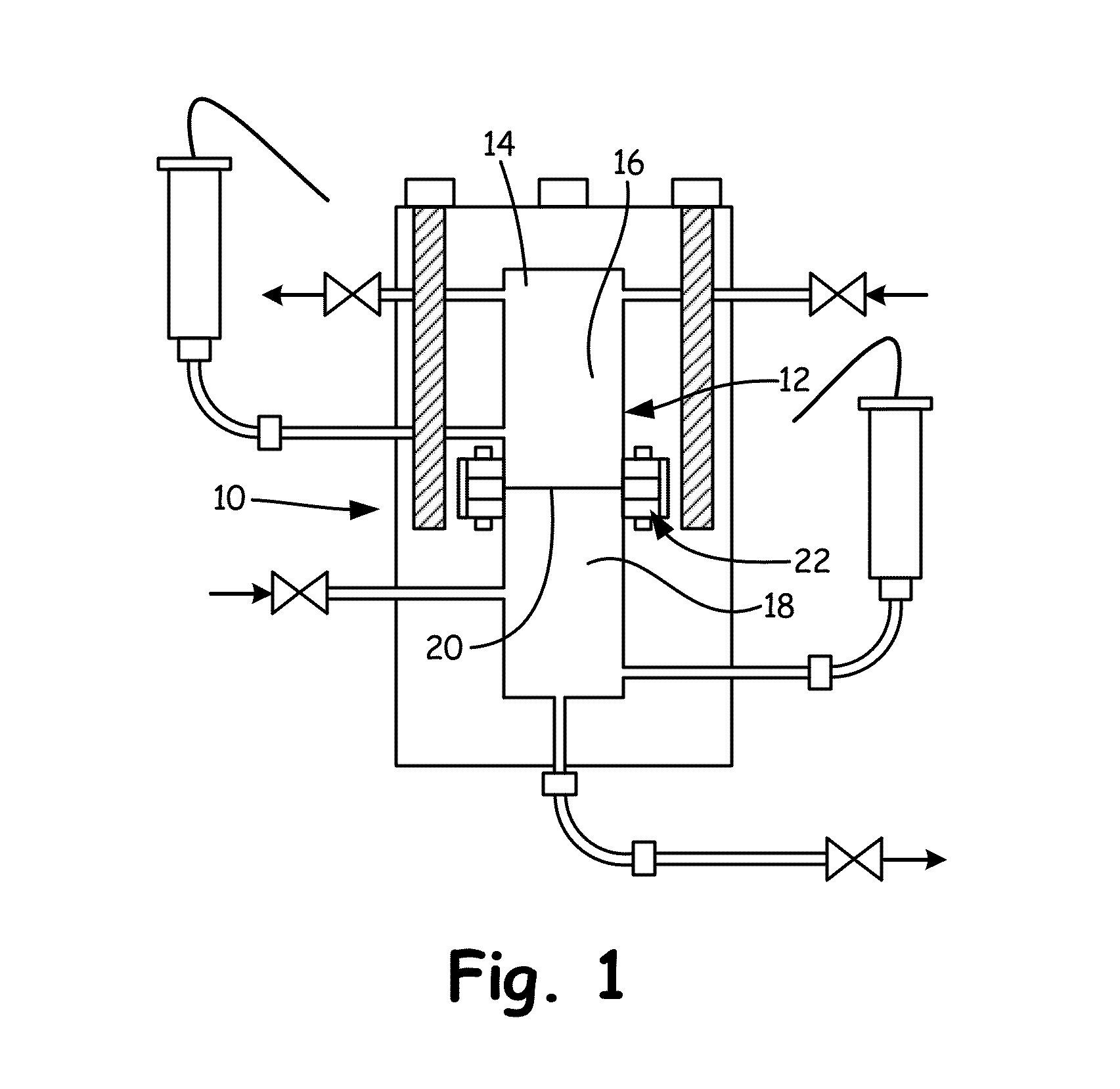Carbon Nanotube Composite Membrane
a carbon nanotube and composite membrane technology, applied in the direction of membranes, liquid degasification, separation processes, etc., can solve the problems of reducing the strength and durability of the membrane, affecting the performance of the primary selective membrane, and reducing the strength of the membrane, so as to achieve the effect of reducing the cost of the separation membrane, enhancing the strength properties of the membrane, and reducing the thickness of the membran
- Summary
- Abstract
- Description
- Claims
- Application Information
AI Technical Summary
Benefits of technology
Problems solved by technology
Method used
Image
Examples
example 1
[0044]The composite membrane of Case 1 from Table 4 was prepared by dip coating the carbon nanotube fabric in the polymer solution for 72 hours while stretched over an aluminum frame. Following submersion for 72 hours, the composite material was withdrawn from solution and held in an atmosphere saturated with FC-770 solvent to prevent drying of the composite, and the excess solution was allowed to drain from the surface of the wet composite. The composite was then allowed to dry under ambient conditions under sufficient tension to remove wrinkles.
[0045]The dried composite membrane was then laser cut into one inch by two inch samples for tensile strength measurements, permeability and permeance testing, and scanning electron microscopy. The following Table 5 sets forth testing results of the composite membrane, in comparison to neat polymer films formed from Teflon® AF-2400 through extrusion, solution casting, melt pressing, and laboratory bench casting.
TABLE 5Permeability,PermeanceT...
example 2
[0058]The composite membrane described in Case 2 of Table 4 was prepared by soaking the carbon nanotube fabric in solution for 72 hours. Following soak, the composite was pressed while in the presence of polymer solution, and subsequently placed on a glass surface. Excess polymer solution was removed from the composite using a squeegee while compressing the composite surface to ensure the polymer solution beneath the composite against the glass was minimized and to remove air bubbles regained between the glass surface and the composite membrane. The composite membrane was then dried at ambient, followed by oven drying at 60° C. for four hours.
[0059]The following table sets forth strength, permeability, and permeance results for the composite membrane:
TABLE 7PermeabilityPermeance,ThicknessTensile(Barrer)(GPU) (1.1 cm dia)O2 / N2Type(Microns)(GPa)O2N2CO2O2N2CO2ratioExtruded381.7 58527315001.6.754.172.14Cast19n / a882446208046.623.51091.97Composite135.9617409004590134703531.93Membrane(Tabl...
example 3
[0063]A composite membrane in accordance with Case 3 of Table 4 was prepared using the procedure of Example 2. The tensile strength of the composite membrane was compared to a membrane cast from Solution 5 of Table 3:
TABLE 9TensileStrengthMembrane(GPa)NotesPolymer only0.99Pure polymer(Table 3, Type 5)Composite Membrane6.95Hyflon AD-60 composite with(Table 4, Case 3)10 gram / m2 Nanocomp fabric
PUM
| Property | Measurement | Unit |
|---|---|---|
| tensile strength | aaaaa | aaaaa |
| length | aaaaa | aaaaa |
| diameter | aaaaa | aaaaa |
Abstract
Description
Claims
Application Information
 Login to View More
Login to View More - R&D
- Intellectual Property
- Life Sciences
- Materials
- Tech Scout
- Unparalleled Data Quality
- Higher Quality Content
- 60% Fewer Hallucinations
Browse by: Latest US Patents, China's latest patents, Technical Efficacy Thesaurus, Application Domain, Technology Topic, Popular Technical Reports.
© 2025 PatSnap. All rights reserved.Legal|Privacy policy|Modern Slavery Act Transparency Statement|Sitemap|About US| Contact US: help@patsnap.com



